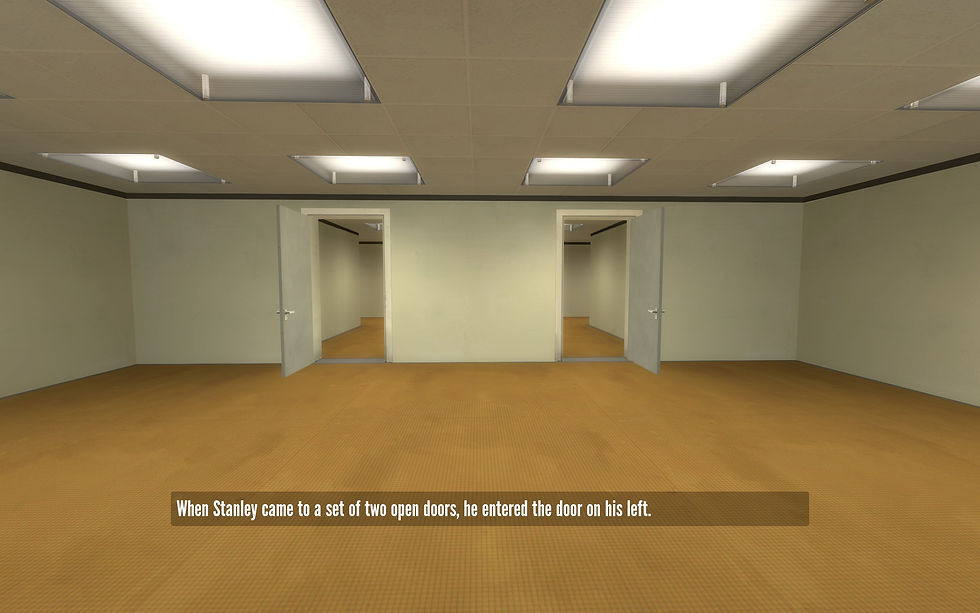Design Targets
- Melissa McQuarrie
- Oct 1, 2016
- 4 min read
Hello! This is my first post as Level Designer and Quality Assurance Lead for Hird Floop – my capstone group for the 2016/17 semester at Sheridan College. The Hird Floop team has welcomed me as their sixth member to reprise the 1st place Summer Sprint Week hit arcade game – “Disco Is Dead!“. Our goal is to create a game that will demonstrate each team member’s strengths, acting as a valuable portfolio piece, as well as drawing attention at various game showcase events as our debut into the gaming industry.
The original Disco Is Dead! prototype was developed in four days for an arcade cabinet. Two players assumed the roles of Mike and Mark – disco divas in a nightclub trying to survive hordes of zombies. Their only defense: slapping.
The game was very well received by players – and now we have the opportunity to revisit this concept to create a vertical slice of a full game – expanded with mechanics and narrative over the course of 8 months.
Although I was not a member of the team during development of Disco Is Dead!, I am eager to contribute my level design expertise to translate the themes of the original fast-paced slapping arcade experience to a sidescrolling PC narrative.
Gameplay and Narrative: Bridging the Gap
One of my biggest challenges as Level Designer will be to unify the gameplay and narrative elements of our game. Since the characters and setting of the original Disco Is Dead! were such a huge hit, we saw potential to further develop a narrative in our game to present the player with slapping scenarios and interactive cutscenes that result in a branching narrative with multiple endings. With half of Hird Floop’s members passionate about designing narrative for games, this was a no-brainer.
Since we are striving for fast-paced, reflex-based slapping gameplay, my biggest concern is breaking the flow of the game with sluggish cutscenes as the narrative is being told. Working closely with our Narrative Director, Nuha Alkadi, we have decided the narrative will be told through short, interactive cutscenes. One of our earliest discussions of bringing back Disco Is Dead! joked about an impatient player being able to slap an NPC at any time as a “skip dialogue” button, resulting in a skipped narrative, but ultimately allowing the player to decide how they wish to experience the game.

One of our narrative references is The Stanley Parable – a first person exploration game offering players seemingly infinite choices to expose various pieces of the narrative. The replayability, non-linear branching narrative choices and comedic feel to this game keeps it frequently coming up in discussions as a reference. However, the gameplay (walking around and interaction with the environment) acts in parallel to the narrative, told through a narrator as the game is being played.

On the other hand, we have gameplay references – games such as reflex-based rhythm games such as Dance Dance Revolution and simple, single-mechanic games such as One Finger Death Punch. Many of these fast-paced reflex games do not include narrative elements – which is something we strive to deliver in our game.

Although their games land closer to the narrative side, we also took note of many of Telltale Game’s titles, featuring interactive cutscenes with choices that lead to branching narrative paths. We noticed that quicktime events like these could effectively tell a story while maintaining the flow of the game. The cutscenes in our game will be designed to have slappable objects and characters to keep players on their toes while the cutscene unfolds – designed to be as fast-paced and engaging as the gameplay itself to keep the player in the state of flow.

We will likely introduce a slap interrupt icon and audio cue during a cutscene that indicates when the player can interact with the story and potentially change their narrative path, similar to morality interrupts introduced in Mass Effect 3.
However, since the game is inherently for two players (because of the dual buddy cop protagonists), we realized that we may encounter issues when one player wants to slap and the other doesn’t. To remedy this, I plan to design a “Slap Off” competitive mode between the two players to make decisions when they make conflicting choices. This was also the fan favourite mode of the original game which shouldn’t be forgotten. This mode would pit the two characters against each other in a slap war, and the player that slaps the most (button-mashing to be clear, not real slapping. ouch.) would win and be able to make the decision. We also discussed the possibilities for having different outcomes based on which player initiates the slap interrupt. For example, we were toying with the scenario of our two protagonists going in for a kiss – and one or both players can stop this from happening with a slap (or… let it happen ;) ).
In addition to my role as Level Designer, I am also Hird Floop’s Quality Assurance Lead, which means I’ll be responsible for majority of our playtesting. This works quite well with my role as Level Designer, since I’ll be able to finely tune the levels based on player response, as well as relay feedback to the narrative team if any of the slapping scenarios are unclear.
Stay tuned for further developments of Disco Is Dead!
























Comments